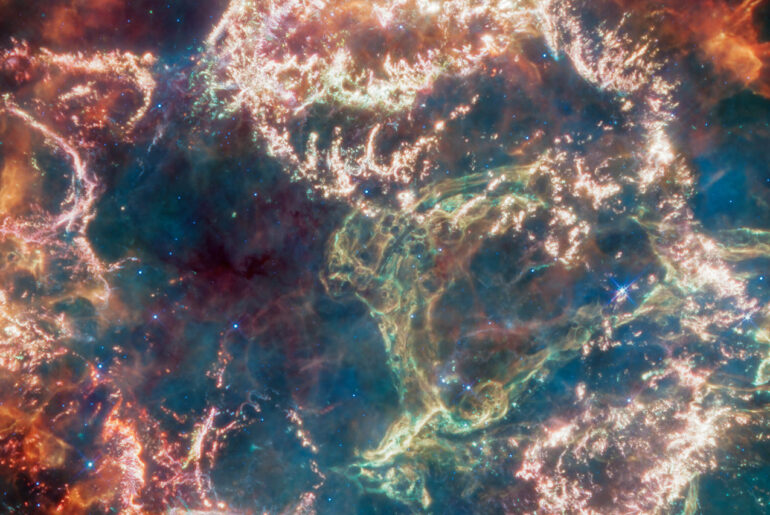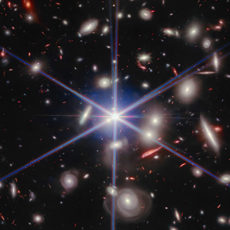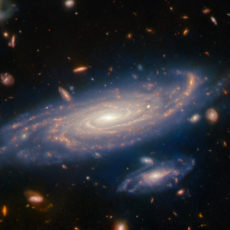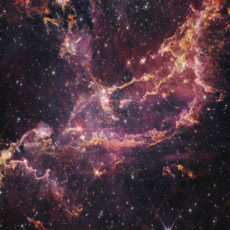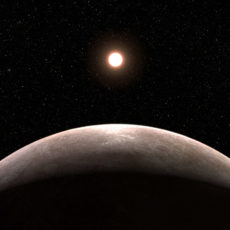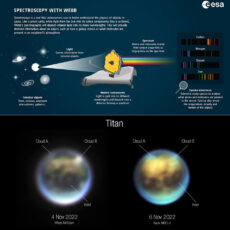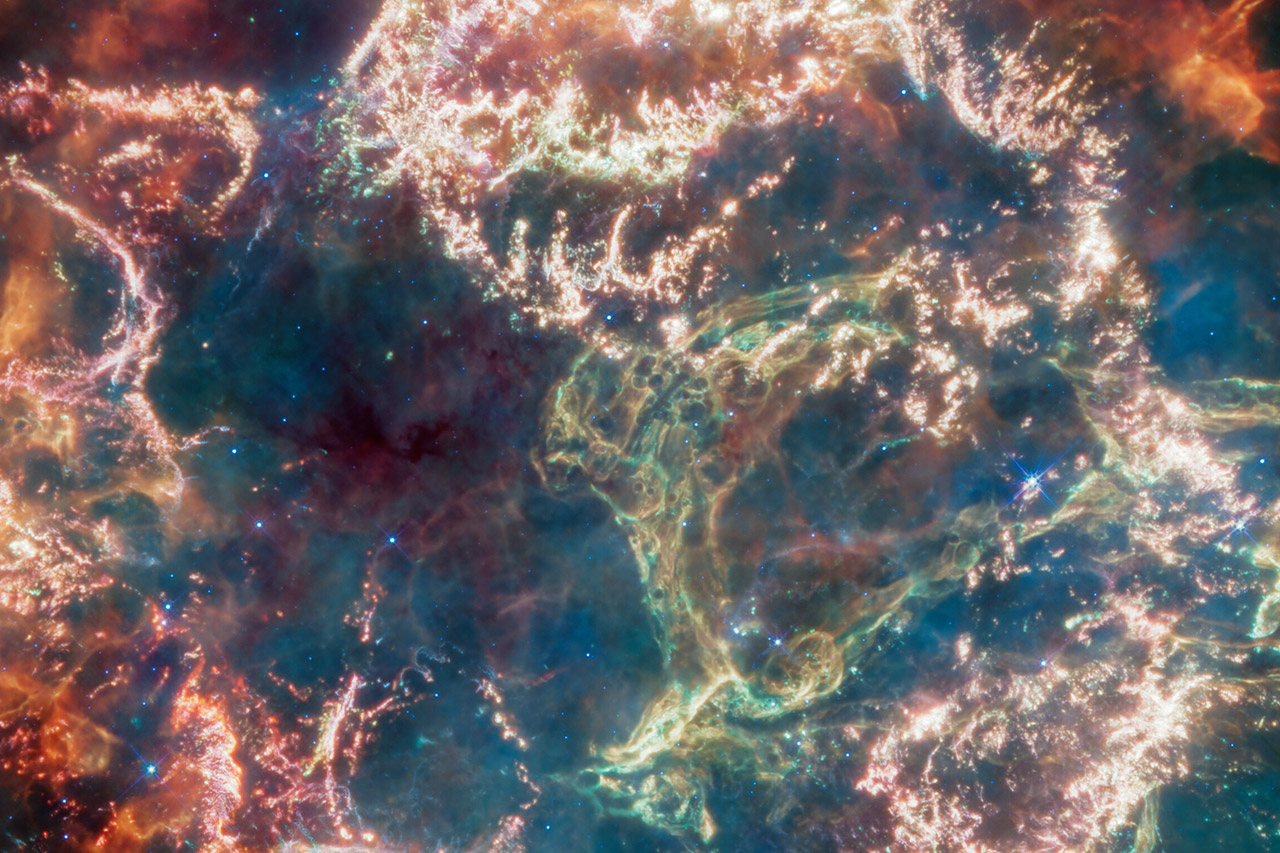
NASA’s James Webb Space Telescope has captured supernova remnant Cassiopeia A (Cas A), a stellar explosion created 340-years ago, like you’ve never seen before. The colors are the result of translating infrared light into visible-light wavelengths, all of which hold vast scientific information that researchers are just beginning to study.
Starting from the bubble’s exterior, we see curtains of orange and red material due to emission from warm dust, marking where ejected material from the exploded star is ramming into surrounding circumstellar gas as well as dust. Inside the outer shell, there are filaments of bright pink studded with clumps and knots that represent material from the star itself.
- POWERFUL TELESCOPE FOR ASTRONOMY BEGINNERS: The AstroMaster 130EQ delivers sharp optics, a stable equatorial mount, and smooth manual controls, making...
- HIGH-QUALITY 130MM OPTICS: Enjoy views through the 130mm (5”) Newtonian reflector, which features high-quality aluminum and SiO₂ coatings and...
- SMOOTH, ACCURATE POINTING: Effortlessly aim and center your target using the two slow-motion control knobs for right ascension and declination whether...

Cas A represents our best opportunity to look at the debris field of an exploded star and run a kind of stellar autopsy to understand what type of star was there beforehand and how that star exploded. Compared to previous infrared images, we see incredible detail that we haven’t been able to access before,” added Tea Temim of Princeton University in Princeton, New Jersey, a co-investigator on the program,” said Danny Milisavljevic, principal investigator of the Webb program.

